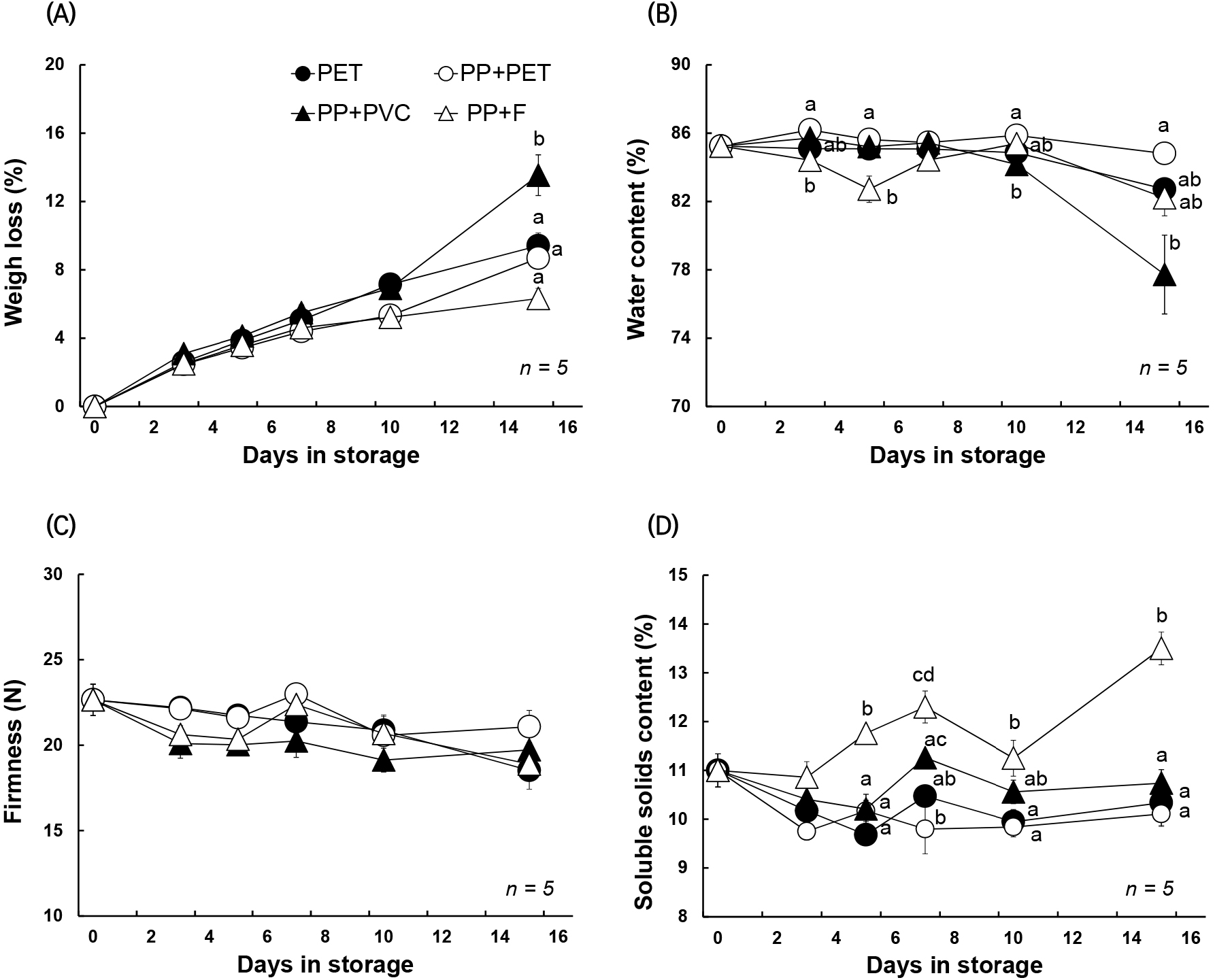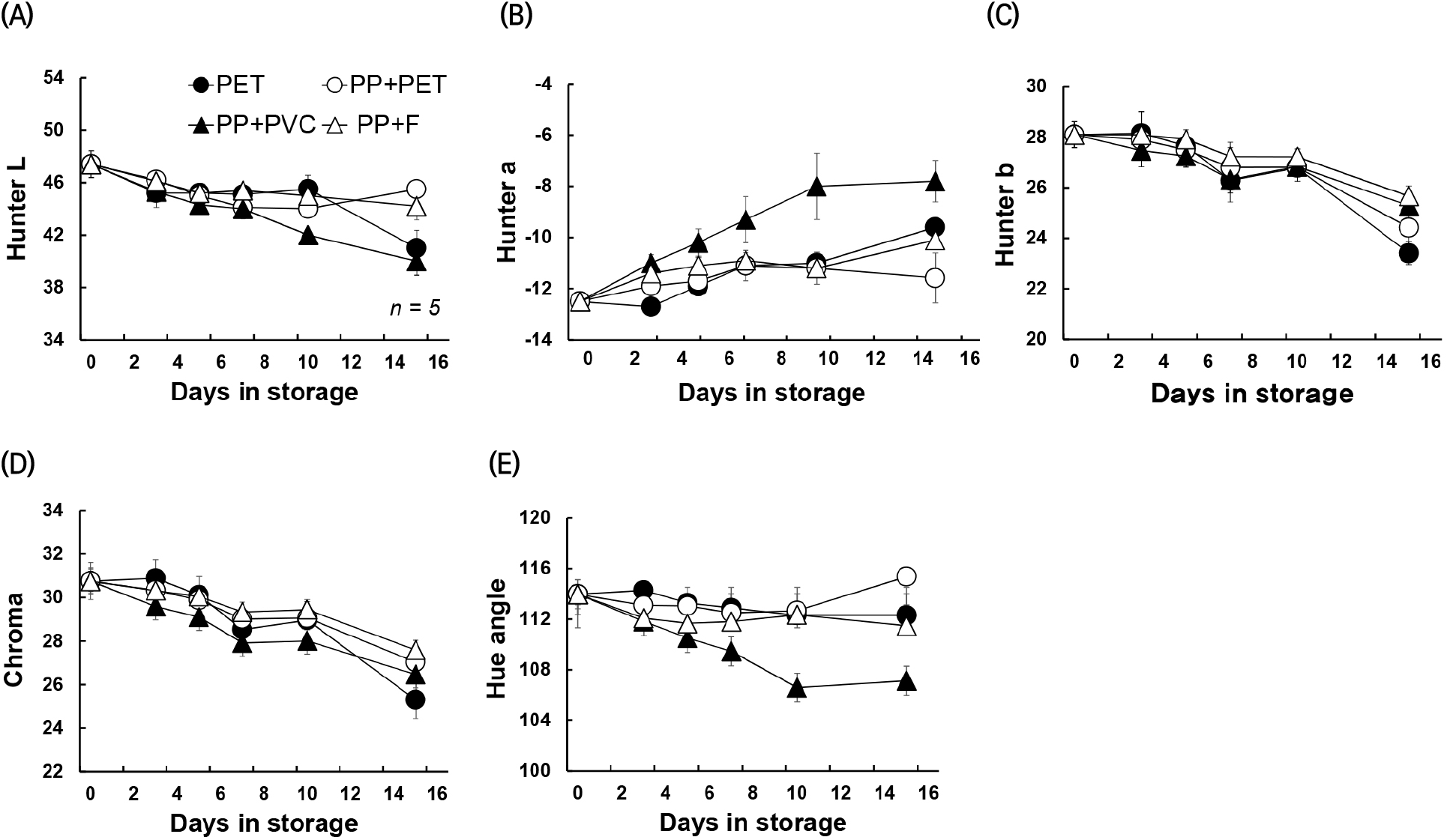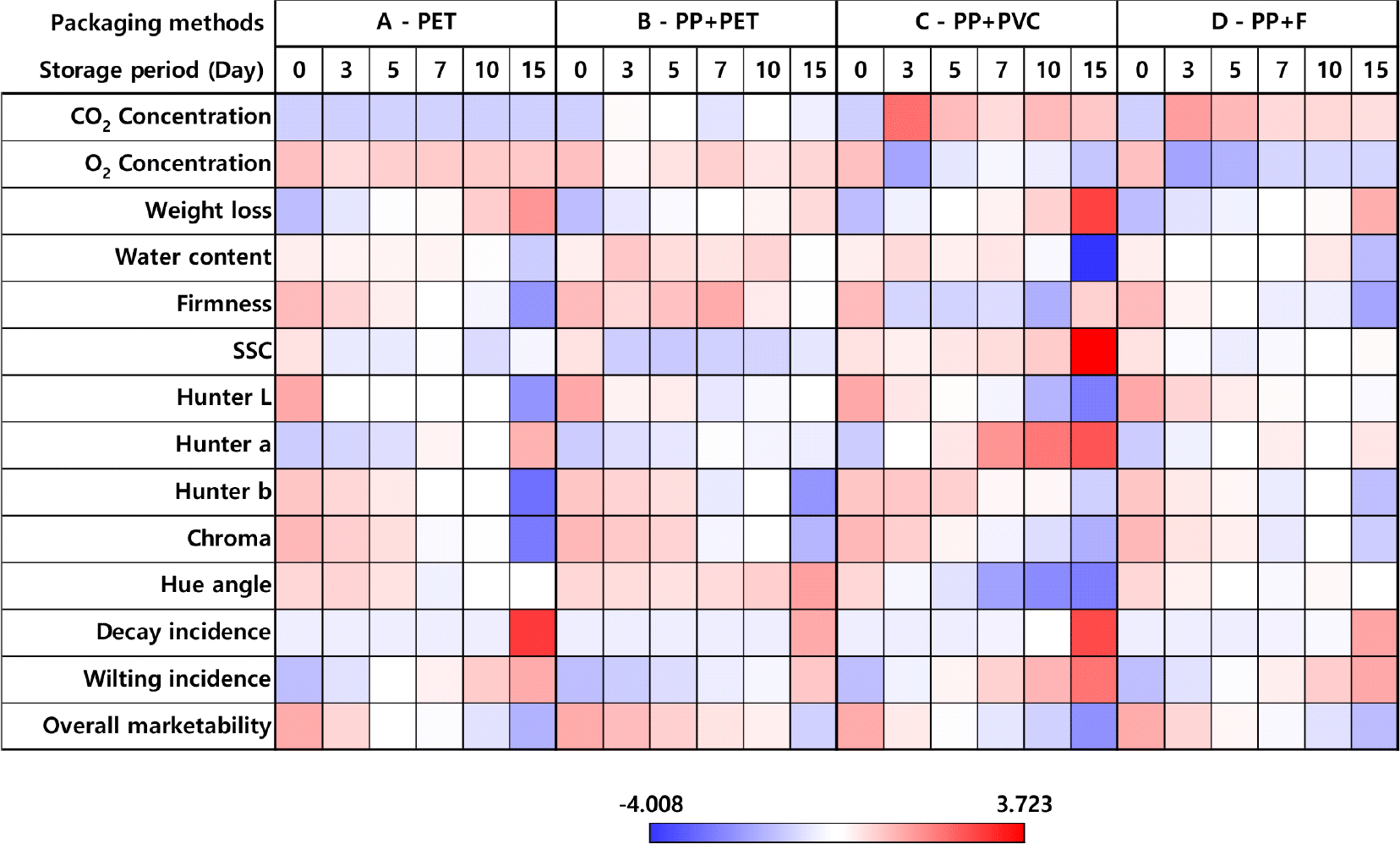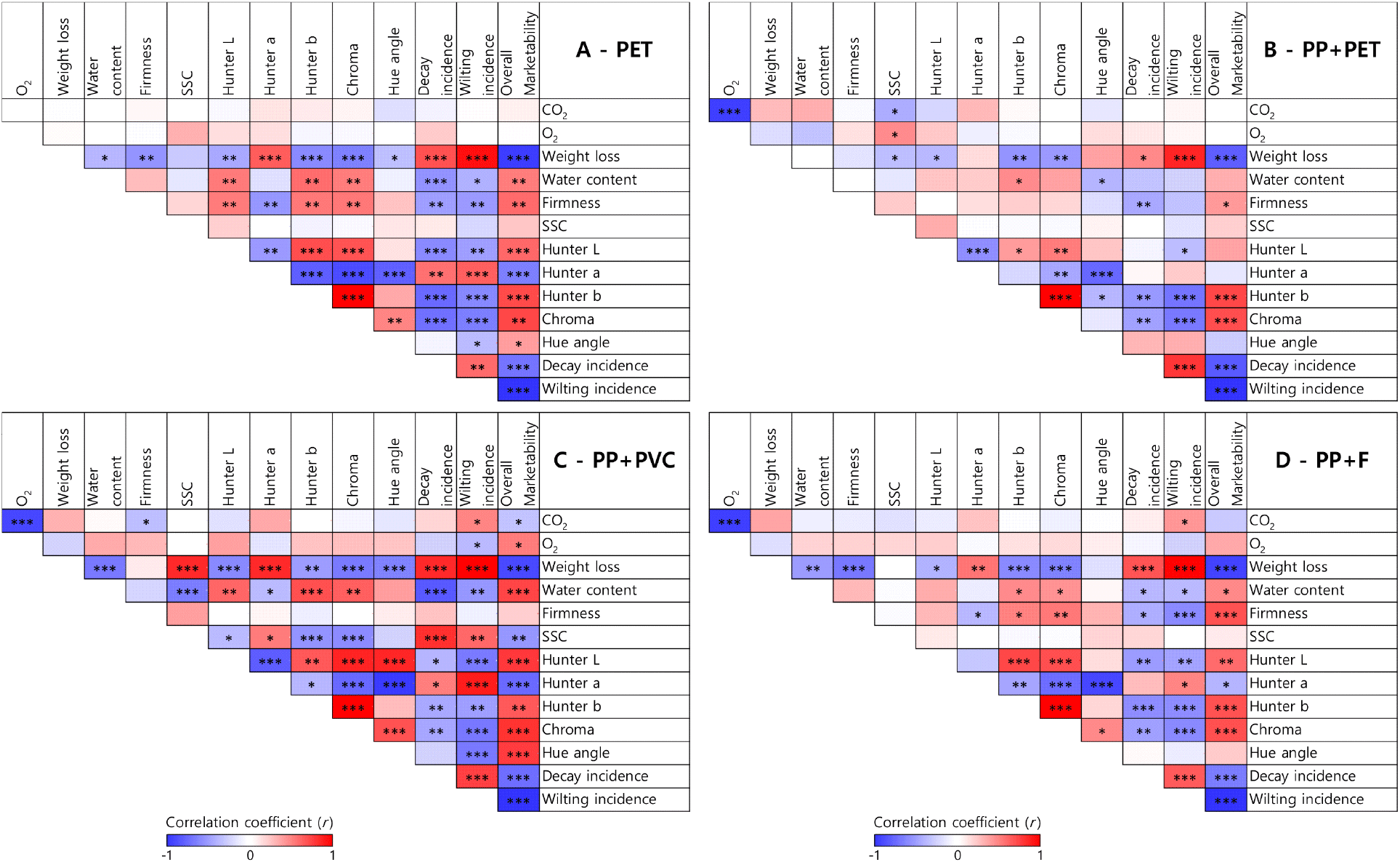1. Introduction
Aralia elata (Araliaceae) is a deciduous thorny shrub widely distributed in China, Japan, Korea, and the United States of America (USA). Because this species is highly tolerant to cold climatic conditions, it is mainly found in the northern regions (Gao et al., 2019; Wei et al., 2020). The young A. elatashoot is used as not only a vegetable, but also folk medicine in Korea and Japan (Wei et al., 2020). The plant’s new buds and twigs are widely used as vegetable and has innumerable health benefits because of its considerably high contents of crude fiber, polysaccharides, secondary metabolites, and micro-elements known to be beneficial for treating diabetes, gastric ulcer, hepatitis, and rheumatoid arthritis, while providing hepatoprotective and antioxidant effects (Sun et al., 2016; Wang et al., 2018). The consumption of newly sprout vegetables in spring, such as A. elata shoots, is increasing with consumer’s demand for natural foods; however, the shoot has low storability and a short shelf-life. The major changes during the senescence of A. elata include loss in weight and change in color due to dehydration and chlorophyll degradation, respectively, which consequently results in a reduction in their marketability. Recent studies have analyzed the secondary metabolites in A. elata and their bioactivity (Lee and Lee, 2021; Seong, 2021; Wei et al., 2021); however, information is limited on postharvest characteristics of this plant. Thus, there are no proposed methods to overcome their short shelf-life and improve their marketability.
Packaging is an inevitable component of food processing and is crucial to preserve food quality, improve food safety, ensure and prolong food freshness, and reduce postharvest waste losses (Opara and Mditshwa, 2013). One of the techniques widely used for packaging vegetables is modified atmosphere packaging (MAP). Harvesting vegetables in modified gaseous atmosphere conditions at low temperatures can protect quality and extend storability by slowing down the chemical and biochemical deteriorative reactions and the growth of microorganisms (Fang and Wakisaka, 2021; Sandhya, 2010). The selection of an appropriate packaging type and material also affects product shelf-life. Polyethylene (PE) is most commonly used for hermetic sealing and to control for fogging in packaging. In addition, polyethylene terephthalate (PET) has the merits of strength, durability, and dimensional stability (Sandhya, 2010). In a previous study, Ben-Yehoshua et al. (1983) reported that PE seal-packed lemons and peppers delayed the deterioration of lemons and peppers during storage by alleviating water stress. Chinese cabbage washed with different sanitizing agents showed different levels of respiration and different odor scores depending on whether it was packaged with PE or PP (Chandra et al., 2012). The freshness of pointed gourd was maintained up to 16 days when MAP-packaged with PP (Sahoo et al., 2015a). However, a literature review revealed that no attempts have been made to uncover a suitable packaging method to extend the shelf-life of A. elata. In this study, we aimed to determine the postharvest characteristics of A. elata shoots during storage, based on varied packaging methods, by monitoring the plant’s quality changes and physiological imperfections. This study provides the basic information on the postharvest quality of A. elata, which will be helpful for conducting further studies on postharvest handling and extending the shelf-life of A. elata. Our study can be used to understand and analyze how different packaging affects the shelf-life of A. elata; our objective is to avoid food wastage and shortage, with respect to the storage of similar products.
For this study, we considered A. elata shoots grown in Sunchang-gun, Jeollabuk-do, Korea (35° 41’E; 127° 14’N) that were harvested on May 10, 2019, from three-year-old trees that had similar levels of vigor. All the A. elata shoots were harvested in the early morning at a practical harvest maturity, and transported to the laboratory. Harvested shoots were chosen based on their uniform size, appearance, and lack of visible defects and were randomly packed in four different types of packaging PET integral containers with pin hole (conventional packaging) (194×122×45, Easepack, Seoul, Korea), polypropylene (PP) containers (190×150×40, Easepack) with PET cover (hereinafter referred to as PP+PET) (197×150, Easepack), PP containers with polyvinyl chloride (PVC) wrap (hereinafter referred to as PP+PVC) (Cook & Lock wrap, Daesung, Icheon, Korea), and PP containers with natural mineral coated functional (F) warp (hereinafter referred to as PP+F) (HWR 400, Hangreentech, Seoul, Korea). Notable, we stored ten shoots per container (five containers for each packaging) at 2±1°C for 15 days and analyzed the sample 0, 3, 5, 7, 10, and 15.
Physiological properties were investigated according to Han et al. (2019), with slight modifications. The weight loss in individual A. elata shoots was measured using 50 replicates by weighting and expressed as the percentage loss in the initial weight. The moisture content was determined using a moisture analyzer equipped with a 250 W halogen lamp (MS-70, A&D Co., Ltd., Tokyo, Japan). The drying temperature was set at 105°C, and the process was stopped when less than 0.05% solids changed in one minute. The moisture content was expressed as a percentage for five replicates from each packaging. Carbon dioxide (CO2) and oxygen (O2) concentrations in containers (packaged with different films) were determined using a gas analyzer (CheckMate 3; Mocon Dansensor, Ringsted, Denmark). The gas concentration in the samples was expressed as percentage for 10 replicates. The firmness of A. elata shoots was analyzed at approximately 2 cm from the cutting surface of the plant, using a texture analyzer (CR-3000EX-S, Sun Scientific Co., Ltd., Tokyo, Japan) equipped with a 5-mm diameter punch probe. The compression speed and penetration depth were 20 mm/min and 10 mm, respectively. The result was measured as the mean maximum peak force, using 50 replicates, and expressed in Newtons (N). The soluble solids content (SSC) was determined in 10 replicates, each with a combined extract from five plant samples. The PR-101α refractometer (ATAGO Co., Ltd., Tokyo, Japan) was used to assess the SSC in the juice squeezed, and results were presented as percentage.
The color of the A. elata shoots was evaluated using a chromameter (CR400, Konica Minolta Inc., Tokyo, Japan) at the equator region, with two readings per plant for 50 sample replicates. The measurements were displayed in the L* (darkness-whiteness), a* (greenness-redness), and b* (blueness-yellowness) spectrum. C* (chroma) and h* (hue angle) were calculated by using the following equation: and h* = arctan (b*/a*) (Karabulut et al., 2007). The marketability of the plant was visually assessed, with respect to the A. elata shoots showing decay symptoms by fungal development molding, of wilting in the 50 replicates. The rate of decay and wilting were measured by counting the number of decay and/or wilting plants; it was expressed as a percentage of total number of plants (n=10) in the packaging. The incidence rate was calculated from the percentage of the damaged portion among the total area of A. elata shoots. The severity of the incidence rate was evaluated as on 5-point scale, and was scored as 0=0%, 1=1-10%, 2=11-25%, 3=26-50%, 4=51-75%, and 5=76-100% in the corresponding affected area. The overall marketability of the plant was calculated as follows: 10-(sum of decay and wilting scores) (Kim et al., 2020).
In this study, all experimental data were presented as the mean of the replicates, followed by the standard deviations. Tukey’s multiple range test, with the significance probability set at p<0.05, was performed using Statistical Package for the Social Science (SPSS) Statistics (version 18.0; SPSS Inc., Chicago, IL, USA). To elucidate the overall response of the postharvest qualities, heatmaps were described using the means and deviations of normalized values obtained from SPSS, and the normalized values were visualized with the color scale system in Microsoft Office Excel (Microsoft Corporation, Redmond, WA, USA). To determine the strength of the relationship between the evaluation indices, Pearson’s correlation analysis was performed using SPSS.
3. Results and discussion
The in-pack gaseous concentrations of CO2 and O2 for A. elata shoots stored in different packages are portrayed in Fig. 1. The CO2 concentration in the PP+PVC and PP+F packaging sharply increased after 3 days of storage, from 0.2% to 2.2% and 1.8%, respectively, and then, gradually decreased to about 1.2% after 7 days in both the PP+PVC and PP+F packaging. PP+PET treatment showed a similar CO2 pattern to that of PP with wrap packaging; however, the concentration was approximately 50% lower in the PP+PET packaging than that in the PP+PVC and PP+F packaging. The CO2 concentration in the PET packaging portrayed minimal changes during entire storage period (approximately 0.2%). The change in O2 concentration during storage was contrary to that of CO2 concentration. Sahoo et al. (2015b) obtained similar results regarding the storage of guava in polymeric films. In their study, the CO2 concentration in the film packs having holes reached a steady state stable level during storage, whereas the intact film packs portrayed an increase in the head space CO2 gas level.

Respiration control in postharvest ripening processes is a key strategy for reducing deterioration and maintaining marketability (Fang and Wakisaka, 2021). Boerzhijin et al. (2020) reported that low O2 (2-7%) and high CO2 (8-10%) concentrations suppressed the respiration rate in kale, decreased ethylene production, and maintained the green color of leafy vegetables during storage. However, the recommended internal atmosphere for the preservation of produce and to avoid anaerobic respiration and CO2 injury at low O2 and CO2 concentrations varied for different vegetables (Fang and Wakisaka, 2021). Therefore, it is important to choose ideal storage conditions that can reduce the characteristics of A. elata shoots.
The major factor responsible for the deterioration of A. elata shoots during storage was rapid wilting due to dehydration. Therefore, weight loss and water content are the basic indices required to determine the storability A. elata shoots. The fresh weight of A. elata shoots at harvest was approximately 6.3 g in all packaging. The rate of weight loss gradually increased during storage, regardless of the packaging method, and the highest weight loss was observed in the PP+PVC packaging (to 13.3% of the initial weight after 15 days of storage). The PP+PET packaging exhibited a relatively lower rate of weight loss by the end of the storage period, compared to the other packaging (Fig. 2(A)). In general, a weight loss greater than 5% is considered to cause a noticeable deterioration in vegetable quality by wilting (Holcroft, 2015). Thus, A. elata shoots packaged in the PET and PP+PVC packaging were unmarketable after 7 days of storage. A negligible change was observed in the water content in A. elata over the initial 10 days of storage; however, after 15 days, the water content decreased by 7.5, 3.0, 2.5, and 0.4% in the PP+PVC, PP+F, PET, and PP+PET packaging, respectively, compared to the initial levels (Fig. 2(B)).

A decline in the firmness of the plant is one of the main factors that limit the postharvest quality and shelf-life of vegetables (Barth et al., 1993). During storage, the firmness of A. elata shoots packaged in PP+PET was relatively higher than that packaged in other treatments. It retained its initial level over the initial 7 days of storage (approximately maximum peak force of 22.6 N); after 15 days of storage, the peak force decreased to 21.1 N. The PET and PP+F packaging portrayed a steady decline in the plant firmness during the entire storage period (from 22.7 N at harvest to approximately 18.7 N at the end of storage). The firmness of the plant in the PP+PVC treatment sharply decreased by 11.3% after three days of storage, and was maintained at approximately 19.9 N during the initial 10 days. Subsequently, the firmness rapidly increased to 22.3 N at 15 days, and it was presumed that the plant tissue was tough due to the decrease in water content (Fig. 2(C)).
As observed on day 3, the SSC of A. elata packaged in PET, PP+PET, and PP+F slightly decreased, compared to the initial level, and then, it was maintained at approximately 10.2, 9.8, and 10.5%, respectively, during the entire storage period. However, the PP+PVC packaging portrayed an increase in the SSC of the plant during the storage period, which may have been affected by dehydration (Fig. 2(D)). The change in the skin color of A. elata shoots, with respect to the packaging method, is presented in Fig. 3. Hunter color values “L” and “a” represents the degree of lightness and greenness to redness, respectively. Lower values of “L”, “a”, and hue angle indicate more darkness, greenness, and yellowness of vegetables, respectively, which is mainly affected by chlorophyll degradation and the subsequent exposure of carotenoid pigment (Yamauchi, 2015). Minor change in the “L” and “a” values were observed in the PP+PET packaging during the entire storage period; whereas the PP+ PCV treatment indicated a remarkable decline in the “L” and “a” values, changing from 47.4 and −12.5 at day 0 to 39.8 and −7.1 on day 15, respectively.

A. elata shoots packaged in the PP+PVC packaging indicated a significantly lower hue angle value during the entire storage period, compared to other packaging, and the value was reduced by 6.9% after 15 days of storage (compared to the initial level). A similar change was confirmed by visual observation of the A. elata shoots (Fig. 4). The A. elata shoots packaged in PP+PET significantly retained their green color; however, the shoots in PP+PVC portrayed a dramatic change in color (from green to reddish brown, with dark spots). Because the green color of vegetables is an important index attribute perceived by consumers, we were able to deduce that the PP+PET packaging, which maintained the green color of the A. elata shoot after 15 days, was the most ideal packaging choice for the plant.

As the storage duration increased, decay and wilting were visually distinct in A. elata shoots, and the external appearance of the shoots on day 10 of storage is shown in Fig. 4. Decay incidence appeared after 7 days of storage in PP+PCV and PP+F packaging, and after 10 days of storage in PET and PP+PET packaging. Even though the rate of decay incidence increased up to 30% after 15 days of storage, only less than 10% of the damaged portion (score 1) was detected at the end of the storage period, regardless of the packaging method (Fig. 5(A)). The development of decay did not occur significantly during storage; however, the rate of wilting incidence dramatically increased after 3 days of storage in all packaging. The PP+PVC packaging exhibited the highest score in wilting incidence compared to other packaging methods, at 1.2, 1.9, 2.5, 3.0, and 4.1 point on day 3, 5, 7, 10, and 15, respectively. In contrast, the PP+PET packaging significantly delayed shoot wilting, and the wilting scores of the PP+PET packaging on day 10 were 51.9, 58.0, and 51.5% compared to the PET, PP+PVC, and PP+F packaging, respectively (Fig. 5(B)). Compared to other packaging, the high incidence of wilting rate in the PP+PVC packaging may have been influenced by rapid water loss during the storage period. The A. elata shoots packaged in PP+PET may have performed better (with respect to being resistant to physiological disorders) because of the relatively persistent water content during storage. Consequentially, the A. elata shoots in the PP+PVC packaging had lower marketability during storage, and the main factor causing marketability degradation was wilting incidence. Notably, in this study, the overall shelf-life of A. elata shoots packaged in PET, PP+PET, PP +PVC, and PP+F was considered until 7, 10, 5, and 7 days in storage at 2°C, respectively, based on the marketability score 8-point (Fig. 5(C)).

A heatmap provided the overall responses of postharvest qualities in A. elata shoots, with respect to the different packaging methods (Fig. 6). In the figure, the color gradient from red to blue represents a transition from high (3.723) to low levels (−4.008) of the normalized responses. The normalized response of the heatmap directly corresponds to the results of individual parameters in the shoots packaged in the four treatments in Figs. 1, 2, 3, and 5.

Compared to PP+PET, the heatmap results of the PP+PVC indicated that the A. elata shoots had relatively low storability, based on the increase on dehydration rate and wilting incidence and the decline in the firmness and greenness of the shoots during storage (Fig. 6). These data indicate that the combination of PP and PET has a positive effect on maintaining the freshness of A. elata, which could be due to either the different water vapour transfer rate or O2and CO2 permeabilities between PET and PVC (Sahoo et al., 2015a). Furthermore, Pearson’s correlation coefficient analysis was performed to elucidate the contribution of individual parameters to the other parameters (Fig. 7). Red and blue colors demonstrated positive and negative correlations between the individual indexes. Notable, the deterioration of the A. elata shoots was strongly correlated with changes in weight loss, skin color, and physiological disorders in all package methods. However, the number of significant correlations between parameters in PP+PET was lower than in the other packaging methods, suggesting that the extent of changes in the quality of A. elata shoots is weaker compared to the other packaging methods. Meanwhile, the SSC of the shoots were negatively linked with the overall marketability in the PP+PVC packaging; however, the SSC and the overall marketability in other packaging methods were not correlated. The increase in the SSC during storage in the PP+PVC packaging was mainly correlated with weight loss and water content. These results suggest that PP+PVC packaging allows a relatively vigorous physiological process of harvested A. elata shoots compared to the other packaging methods and that plastic materials with relatively lower water vapour transfer rate and gas permeability, such as PET, may be suitable for packaging A. elata shoots after harvest.

4. Conclusions
In this study, we analyzed the physicochemical changes in A. elata shoots packaged in different packaging materials that occurred over a storage period of 15 days. The PP+PET packaging resulted in significant weight reduction and physiological disorders during the storage period, compared with other packaging methods. Our results suggest that, over the course of 15 days and at a controlled temperature 2°C, among all the packaging methods analyzed in our study, the PP+PET packaging was the most effective in decreasing the deterioration of A. elata and maintaining its marketability.










